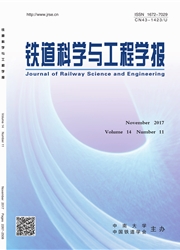

 中文摘要:
中文摘要:
A computational fluid dynamics( CFD) model was presented to simulate wind flow over a forest canopy for analyzing the wind flow within and above forest canopies. Unlike previous studies on the canopy flow,the effect of canopy contour on the canopy was considered to develop the simulation method into a more general but complex case of wind flow over a forest canopy,using cedrus deodara and cinnamomum camphora. The desire of this work is mainly motivated to provide a rational way for predicting the wind flow within and above vegetation canopies. The model of canopy is not incorporated in the geometrical model,and it uses a porous domain combined with k-ε two-equation turbulence model with source / sink terms. The objectives of this paper are to analyze the contour of pressure and velocity and compare the simulation results with other works and field measurements. Results are encouraging,as the model profiles of mean velocity( u) qualitatively agree well with other works compared with and quantitatively have similar explanations as several authors. In conclusion, it is demonstrated that the adoption turbulence model with source / sink terms for forest canopies is proved to be a physically accurate and numerically robust method. The model and method are recommended for future use in simulating turbulent flows in forest canopies.
 英文摘要:
英文摘要:
A computational fluid dynamics( CFD) model was presented to simulate wind flow over a forest canopy for analyzing the wind flow within and above forest canopies. Unlike previous studies on the canopy flow,the effect of canopy contour on the canopy was considered to develop the simulation method into a more general but complex case of wind flow over a forest canopy,using cedrus deodara and cinnamomum camphora. The desire of this work is mainly motivated to provide a rational way for predicting the wind flow within and above vegetation canopies. The model of canopy is not incorporated in the geometrical model,and it uses a porous domain combined with k-ε two-equation turbulence model with source / sink terms. The objectives of this paper are to analyze the contour of pressure and velocity and compare the simulation results with other works and field measurements. Results are encouraging,as the model profiles of mean velocity( u) qualitatively agree well with other works compared with and quantitatively have similar explanations as several authors. In conclusion, it is demonstrated that the adoption turbulence model with source / sink terms for forest canopies is proved to be a physically accurate and numerically robust method. The model and method are recommended for future use in simulating turbulent flows in forest canopies.
 同期刊论文项目
同期刊论文项目
 同项目期刊论文
同项目期刊论文
 期刊信息
期刊信息
